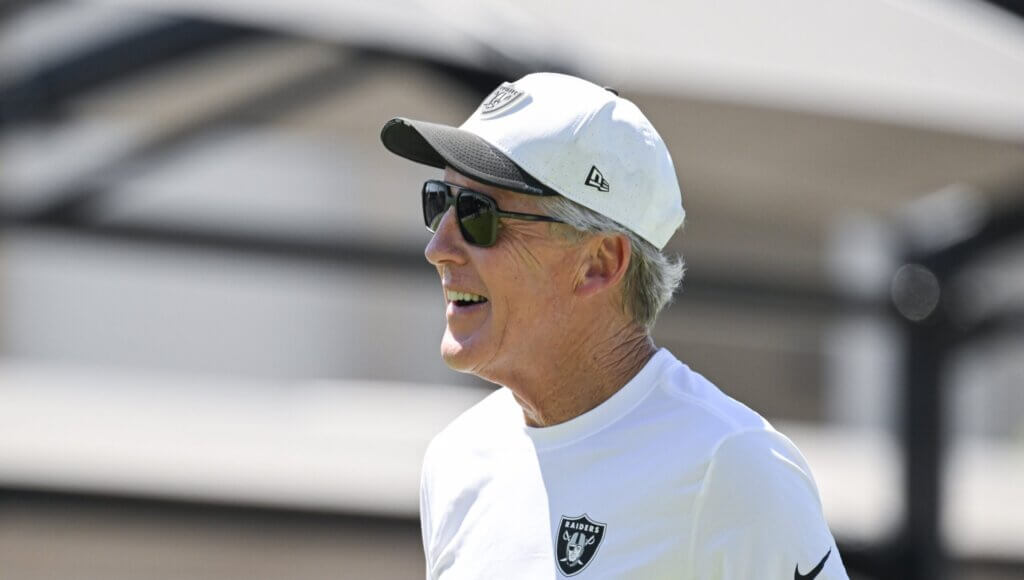The Las Vegas Raiders enter the 2025 season with a dramatically reshaped roster and heightened expectations. Over the offseason, a flurry of key additions transformed the defensive back seven, while a new quarterback and first-round running back promise an offensive spark.
For fans and analysts alike, the sweeping changes raise a single question: Will the new-look Raiders move the odds in their favor?
This article explores how offseason acquisitions might impact the team’s 2025 prospects, focusing on defense, offense, leadership, and the Raiders’ bold strategy. By examining these changes and their context, we’ll dive into how these moves might alter the franchise’s trajectory and what it could mean for those tracking the Raiders’ odds this fall.
Defensive Identity: From Continuity to Change
The Raiders’ defense anchored their performance through recent seasons, offering rare consistency amid organizational turbulence. Last year’s continuity on defense played a major role in their late-season competitiveness. However, a four-win campaign triggered another coaching change and, with it, a near-total overhaul of the defensive back seven.
Familiar names—Robert Spillane, Divine Deablo, Nate Hobbs, Jack Jones, and Tre’von Moehrig—have departed, and their replacements arrived mostly on short-term contracts. This marks a sharp pivot from the steady approach that defined recent years, signaling an appetite for risk in pursuit of a higher ceiling.
Linebacker Revamp: Experience and Expectation
The departure of starting linebackers Spillane and Deablo left a leadership gap and drove home the importance of proven production. To address this, the Raiders signed veterans Elandon Roberts, Devin White, and Germaine Pratt, each with significant NFL experience. Pratt, in particular, generated buzz among fans, with 95 percent supporting his addition in a recent poll. With 88 career starts and 261 tackles over the past two seasons, Pratt brings reliability to the heart of the defense.
These high-profile additions have not only strengthened the roster on paper but have also begun to shift Las Vegas Raiders odds among bookmakers, reflecting increased optimism about the team’s defensive capabilities. By opting for experienced, starting-caliber talent on short contracts, the front office sends a clear message: immediate improvement is the mandate, and roster flexibility will shape future planning.
Secondary Shakeup: Unproven Potential Meets New Opportunity
At cornerback and safety, the Raiders introduced further change. Starters Jack Jones, Nate Hobbs, Marcus Epps, and Moehrig are out, replaced by Eric Stokes, rookie Darien Porter, Jeremy Chinn, and Lonnie Johnson Jr. Notably, Chinn arrives on a two-year deal and is expected to split time between nickel corner and safety, while Johnson and Stokes add versatility and upside.
Isaiah Pola-Mao, who started 14 games last year following an injury, now has a shot to secure a long-term role. This level of turnover brings uncertainty, but also the promise of higher athleticism and schematic fit under new defensive leadership. The Raiders’ approach highlights their willingness to trade familiarity for untapped potential.
Offensive Additions: New Faces in Critical Roles
While defensive moves dominate headlines, the offense is undergoing its transformation. Geno Smith, acquired as the new starting quarterback, steps in to guide a group looking for stability and improvement. Paired with first-round pick Ashton Jeanty at running back, Smith’s presence signals a shift toward more dynamic, balanced play-calling. These changes aim to spark an offense that lagged behind the defense in previous campaigns.
Calculated Risks: The Logic Behind One-Year Deals
Most of the Raiders’ offseason signings are structured as one-year contracts, except Jeremy Chinn. This deliberate approach provides flexibility, both in financial terms and in adjusting the roster based on real-time performance. It also places a premium on competition, as nearly every new addition must quickly prove their value to secure a longer future in Las Vegas.
The front office declined to re-sign several key free agents, even though they had the means to do so, preferring to test new talent. This calculated risk could yield rewards if fresh faces outperform expectations, but it also raises the stakes for short-term results.
What’s Next: Opportunities and Uncertainty
As the Raiders approach the 2025 season, they present a fascinating case of calculated transformation. The organization has swapped familiarity for flexibility, and continuity for upside, hoping that a blend of veteran reliability and young athleticism will produce a breakthrough.
For those watching the odds, the team’s approach means greater volatility: rapid improvement is possible, but so is turbulence as new pieces learn to mesh. Fans, analysts, and oddsmakers alike should keep a close eye on how quickly the new arrivals adapt to the system and establish chemistry on both sides of the ball. If the gambles pay off, the Raiders could be one of the year’s most surprising contenders.
*Top Photo: Getty Images

